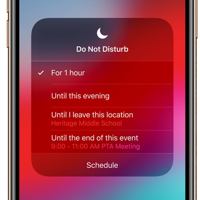Gray Yeon (연시은; Yeon Sieun) typ osobowości MBTI
Osobowość
"Jaki typ osobowości jest {profilename}? {profilename} jest typem osobowości {mbti} w mbti, {enneagram} - {iv} - {tritype} w enneagram, {big5} w Big 5, {sociionics} in Socionics."
ISTJ or INTJ, I will end this debate. As an INTJ, There's no denying it that Gray is badass but...we have a preconception that "All INTJ's are badass" and "Calm, Cool and Badass, so INTJ", throw those preconceptions away fellow INTJ's. Let's Judge this rationally. Logic is cold, let's not bring our personal feelings into it and create biases in our arguments. Argument: Si vs. Ni 1. Si users have a detailed sensory-based memories, while Ni users have impressionistic memories This is the most important concept for you to grasp in this entire article. This is the root of Ni and Si. If you really think about this point and really dwell on the implications of it, you will be able to understand where every stereotype, misconception, and description of Ni/Si actually comes from. Si users introvert concrete, sensory data. When they look into the past, they’ll remember how something physically felt (but not necessarily emotions), smelled, looked, and etc. They’ll remember odd and possibly mundane details that people may be surprised that they remember. This is probably one of the easiest cognitive functions to understand. When Si users search their memories, they’re looking to match up the present details with the past details. Ni users are the opposite. Ni users store away memories in the form of impressions. Sure, everyone remembers details to a degree, but Ni users are going to hone in less on those details. Sure, they’ll notice details in the moment, but they’re going to focus more on the overall idea of what just happened and store that away. They’re more interested in the lesson or meaning behind something. Essentially, they’re introverting information to be used for pattern recognition later. Ergo, while Si users are matching up details with details, Ni users are comparing present patterns with past patterns. This is why Si conclusions are frequently traceable to specific memories, while Ni conclusions can appear to be without backing. 2. Si users lean heavily on past experience, while Ni users are guided by intuition Because Si users store away the past in great detail, they will lean heavily on that vast store of information in their head. This does NOT mean they will mindlessly repeat traditions. They’ll repeat the good, but avoid the bad. If something has always worked, they’ll keep doing it that way, and usually won’t feel the need to explore some new method of doing it, unless there is a very clear indication that the new way will be better. On the flip side, if something didn’t work, they will NOT do it again. They’ll excel at learning from the past. Therefore, with all that said, the ISXJs will feel very uncertain and hesitant when they have no experience to match up to the current situation since they rely on their past experiences. They’ll probably try to gather information from others, effectively trying to learn from other people’s experiences, since they have none of their own. Both ISXJs and ESXJs may appear very future oriented in an attempt to plan out the best path to reach their desired life goal. ESXJs will be more impulsive or eager to try something new than ISXJs since their dominant function is extraverted, but they’re unlikely to be as impulsive as the ENXJs due to lack of Se. Ni users are the opposite. Their memory is abstract, more akin to a blurred photo. They’re not seeing the past in high definition like the Si users. Instead, they’re seeing the patterns, the big picture , or the end result. Pattern recognition is a much “quicker” type of memory, because it doesn’t require time to sift through all of the individual details to find the best matching memory. Rather, Ni users will somewhat regularly walk into a situation and recognize it without any explanation as to why. They will then respond based on these instincts. Because of the abstract nature of their memory, they’ll grow accustomed to acting in spite of the absence of clear information. Ergo, Ni users will be more comfortable operating in situations where they don’t have concrete information to dictate their next decision or action. Bear in mind, that Ni users can store away inaccurate impressions and inadvertently feed themselves bad information. While Si users can place too great an emphasis on irrelevant details, Ni users may lean heavily on a feeling or instinct that turns out to be based on a flawed memory or false impression. Regardless, using their intuition as a guide, Ni users will seek out the best path possible to achieve whatever personal vision or life goals they have formed. 3. Si users are more prone to being haunted by the past, while Ni users will view the past more objectively. 4. Si users make concrete observations, while Ni users read between the lines. 5. Si users have an eye for the details, while Ni users focus on the big picture.
Biografia
The titular weak hero of the webcomic. Despite what his bony stature and gentle looks would suggest, Gray is a brutal fighter who will do whatever it takes to win. His cold-hearted determination stems back to an incident in middle school where his best friend was hospitalised due to the cruelty of bullies and the cowardice of bystanders. Vowing to never get hurt again, Gray closes himself off to the world and learns everything he can to give him an advantage against the bullies who would try to keep him down. His cunning in battle eventually earns him the moniker "White Mamba", and brings him to the attention of the Yeongdeungpo Union. As his reputation grows, so too are people drawn to him, until he finds himself embroiled in Ben's gang and is slowly, slowly brought back out of his shell. A graduate of Byuksan Middle School.
Osobowość correlate

Donald Na (나백진; Na Baekjin)

Teddy Jin (진태오; Jin Tae-oh)

Wolf Keum (금성제; Geum Seongje)

Stephen Ahn (안수호; Ahn Suho)

Ben Park (박후민; Park Humin)

Jake Ji (지학호; Ji Hakho)

Alex Go (고현탁; Go Hyeontag)

Gerard Jin (진가욜; Jin Gayool)















